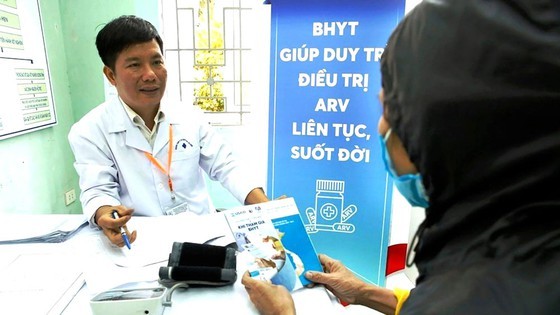
According to the HIV Prevention Department, the disease is continuing its downward trend but risks still latent in the community. Alarmingly, the rate of HIV infections in the gay men and other men who have sex with men (MSM) is drastically escalating meanwhile people living with HIV are facing limited access to insurance coverage.
The Ho Chi Minh City Disease Control Center said that within the first ten months of 2019, around 2,148 people have been infected with HIV, approximately decreasing by 330 cases compared to the same period last year plus 204 died of AIDS.
So far, the city has had 61,244 cases of infections including 11,659 HIV-related deaths and 49,585 are living patients.
Deputy Director of Department of Health in Hanoi Hoang Duc Hanh said that all districts in the capital city have HIV- infected patients and just 22,211 people are alive. Especially, from the early year, Hanoi has recorded additional 1,230 fresh cases of HIV or a year on year increase of 54.8 percent.
Noticeably, through surveillance, the rate of male HIV infections has risen with 76 percent. Simultaneously, unprotected sex leads to rise in people contracting HIV from 65.6 percent in 2018 to 71.4 percent in 2019.
There has been a rise in the number of HIV-infected people in all localities across the country. Nguyen Hoang Long who heads the Department of HIV Prevention said that there has been a downward trend in the group of drug addicts but more gay have infected with HIV.
He stressed that before the rate of HIV-infected gays was around 3- 5 percent, but it rose to 10 – 15 percent and it is highly likely to go up to 40 percent by 2025. Surveys have shown that the average age of HIV-infected gays is 23 and mostly in HCMC, Hanoi and the southern province of Binh Duong.
Because of the high number of HIV-infected people, the health sector and local administrations have enhanced preventative health measures and insurance coverage of around 90 percent of HIV-infected people.
Moreover, of over 140,000 people living HIV, around 1,000 people diagnosed with HIV start antiretroviral treatment from insurance.
However, the health sector is facing difficulties in increasing insurance coverage because people living with HIV don’t want to use insurance for fearing discrimination and migrant HIV infected people don’t have personal identification.
To achieve the United Nation’s goal and eliminate the epidemic by 2030, Mr. Long said that it needs to disseminate information of the disease and education of HIV prevention as education is a crucial part of efforts to prevent AIDS among young.
Additionally, preventative medicine measures will be implemented for the group of people with high risk and spouses of HIV-infected people plus expansion of consultation and testing service. The country strives to achieve the target of 90 percent of people living with HIV treated with ARV by 2020 ( or 100,000 patients will use ARV paid by insurance agency).
Today, the HCMC Department of Health held a meeting in response to the National Action Month against HIV and the World AIDS Day in Binh Chanh District to increase people’s awareness of HIV prevention.
























